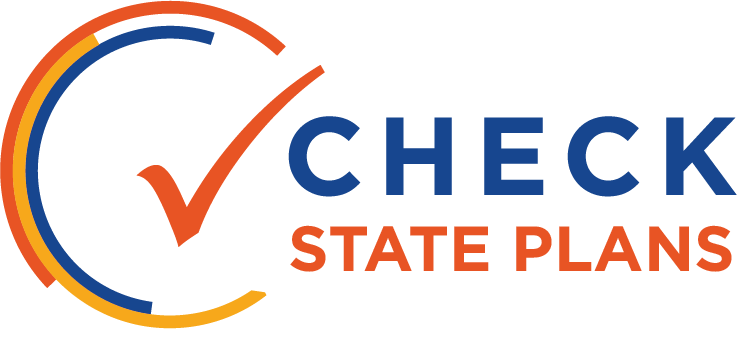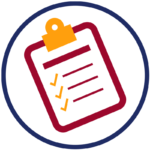
GEORGIA
- Overview of Georgia's Plan
- Equity
- Strengths
- Improvements
- Coherent and Aligned Vision for Improving Outcomes
- Strategic Use of Funding and Alignment of Resources
- Rigorous Review Process
- Continuous Improvement, Monitoring and Evaluation
- Evidence-Based Interventions
- Capacity Building and Autonomy
- Engagement
- Sustainability
Promise to Practice Overview
Equity
Georgia has a strong approach to equity in its school improvement planning process—requiring school- and district-level goals to address supplemental supports for disadvantage student groups, and requiring states to take action to address identified gaps.
Strengths
Georgia created a flexible framework for local decision makers that supports districts to set goals and specify activities based on trends in the data and root causes. Georgia has a strong support system and resource repository of evidence-based practices that can help ensure strategies match the needs of the population served.
Improvements
Georgia could expand its support to monitoring district and school improvement, rather than a strict focus on compliance. The state’s high-quality planning tool could also be more aligned with the state ESSA plan, and contain more information about how comprehensive and turnaround schools will be included in those processes. There also is opportunity to better articulate the role of the state as a partner in the improvement process.
Coherent and Aligned Vision for Improving Outcomes:
Strategic Use of Funding and Alignment of Resources:
Rigorous Review Process:
Continuous Improvement, Monitoring and Evaluation:
Evidence-Based Interventions:
Capacity Building and Autonomy:
Engagement:
Sustainability:
Click through the tabs on the left to see how Georgia scored in each category.
Equity
How well does the state’s approach to school improvement include focused attention on supporting underserved students and closing the achievement gap? Does the state require LEAs to maintain an equity focus in their school improvement plans, activities and resource allocations?
Georgia has a strong approach to equity in its school improvement planning process. For each school- and district-level goal, the state requires articulation of supplemental supports for disadvantaged student groups. Most importantly, the district improvement plan is very clear and specific on the equity gap analyses that districts must perform, and requires districts to take action to address identified gaps.
The approach could be further strengthened by either connecting the Equity Action Plan to the subgroups listed in each goal or including in the Equity Action Plan associated costs and funding sources for the equity initiatives.
Strengths
How is the state thoughtfully leveraging ESSA’s flexibility to put in place the necessary policies and procedures that create an enabling environment for effective and sustained school improvement, and that consider state/local lessons learned from past efforts? What parts of the state’s turnaround strategy or guidance to LEAs were strongest or exemplary?
Georgia has done well in creating a flexible framework for local decision-making. The planning tools use the data elements in the comprehensive needs assessment to enable root cause analysis in the district planning tool, then ask districts to set goals and determine relevant activities based on the trends in the data and identified root causes. The comprehensive needs assessment is referenced throughout the planning process and is consistently driving questions about the connection of the school improvement tool to specific data elements and pages, providing clear alignment of the data to the proposed strategy.
In addition, Georgia’s approach to equity is solid as described above, and the state’s theory of action for continuous improvement and capacity building is also very clear and consistent throughout all of the state’s guidance to districts and schools.
Georgia’s support systems and resource repository for evidenced-based strategies provide an opportunity for all educators to learn best practices and find opportunities for increased student achievement that matches the needs of the population served.
Improvements
How can the state improve its turnaround efforts? What parts of the state’s strategy or guidance to LEAs were unclear? What risks and challenges might the state face with its current approach?
Georgia could improve its monitoring and evaluation efforts by focusing its monitoring on results rather than strictly on compliance. The current monitoring approach poses risks of continuing a business-as-usual compliance focus within districts. The state could also develop a statewide evaluation plan that includes building the capacity of districts to evaluate their own efforts and build an evidence base for the state.
The high quality planning tools that Georgia has developed could more closely align with the processes and systems in its ESSA plan, including more information about how comprehensive and turnaround schools will be included in these processes and explicit connection to ESSA’s long-term goals, interim targets, subgroup focus, and exit criteria.
More detail is needed to articulate role of the state. Without a defined action plan from the state, the districts and the schools will continue to view the state as compliance-focused instead of instructional improvement partners.
Coherent and Aligned Vision for Improving Outcomes
How well does the state articulate a coherent vision or theory of action that drives their school improvement efforts? Is this vision aligned with the state’s accountability system and goals for closing the achievement gap?

Georgia has identified a theory of action rooted in five components of improvement: a coherent instructional system, effective leadership, professional capacity, family and community engagement, and a supportive learning environment. These five components are present throughout all of the state’s guidance documents and school improvement materials. The state has also articulated how districts and schools will take action across the five components through its improvement planning process.
Credit should be given for the state’s attempt to reduce duplication and repetitive information gathering. Georgia’s comprehensive needs assessment appears to be a single place where schools and districts may assess their needs across all students, groups, and programs, and will be reviewed by cross-program teams at the state.
The theory of action does not explicitly connect the rigorous implementation of these components to closing equity gaps, however the district improvement plan template does explicitly reference the district’s comprehensive needs assessment and asks each district to identify equity gaps based on those data. Equity gaps are addressed in state guidance documents, and districts must examine their equity gaps as they complete their plans, however the focus on equity could be strengthened by linking the actions the district will take in its school improvement plan with the equity strategies in its equity plan. As the district improvement plan template reads now, the equity plan and the district improvement plan are presented as two distinct plans.
It is also less clear how Georgia’s continuous improvement framework and comprehensive needs assessment tie to schools identified as targeted, comprehensive, or turnaround. There does not seem to be a prompt for identified schools to consider what they need to do in order to be exited from status, for example. There is no reference to the state’s long-term student outcomes goals required in ESSA anywhere in the planning documents.
Strategic Use of Funding and Alignment of Resources
Is the state allocating funding in a way that is strategic and maximizes resources? Are LEAs expected to prioritize improvement efforts that address the underlying performance issues?

Each district in Georgia is expected to identify root causes of underperformance in setting its goals and is prompted to identify possible funding sources that will contribute to meeting each goal. This creates a reasonably clear link between local resources and local areas of need.
Georgia has not indicated, or there is very little detail, how resources will be prioritized at the state level. The state’s ESSA plan details out how all schools get improvement funding, but not how those funds are distributed or related to needs. Further, the plan outlines additional federal funding available to comprehensive and targeted schools. For comprehensive schools, the chart references funding is to be provided based on school improvement plan evidence-based action steps, but it is not clear what this means. Turnaround schools are to receive priority in available state and federal funding, but it is not clear how, how much, or from which sources.
The state does offer a Consolidation of Funds Initiative for certain districts to be able to consolidate federal, state, and local funds into specific Title I schools in order to be able to use those funds more flexibly. There is no indication as to the viability of this initiative, though some may argue that schools serving a predominantly low-income population already have this flexibility to some degree.
Given that Georgia is placing much of the responsibility on district and schools to effectively allocate resources, there does not appear to be an aspect of the planning process that asks districts and schools to prioritize overarching needs, goals, or action steps in order to gain clarity on where the focus should be.
Rigorous Review Process
Is the state applying rigorous criteria and review processes to ensure resources will be used to support effective school improvement efforts? Is the state prioritizing funding to LEAs who demonstrate the greatest need for school improvement funding (including LEAs with a high percentage of CSI and TSI schools) and the strongest commitment to school improvement?

Georgia’s review criteria are clear, and but do not seem to address the quality of the plan elements as much as the presence of those elements. The state appears to use an iterative plan review process which features dialogue between the state and the districts, including coaching during the four-month planning period, which could be beneficial in the long run.
However, while coordinated, the review by the state seems to be more formulaic than rigorous. It does appear that there are likely to be resubmissions to refine the district or school plans, but it was not clear whether plans would be returned based on compliance oriented issues or the quality of the submission.
It does not appear that the state plans to distinguish funding allocations to districts based on level of need, and instead will distribute funds based on the numbers of students enrolled in a designated school. There does not appear to be a funding distribution process that recognizes a higher percentage of comprehensive or targeted support schools in district, nor does the funding process recognize strengths of school improvements efforts with an incentive plan for success.
Continuous Improvement, Monitoring and Evaluation
Does the state have a robust, data-driven process to monitor LEAs’ implementation of the school improvement plans within their district? Did the state establish clear milestones to ensure improvement over time, and within four years?

Georgia’s overall monitoring plan is comprehensive, but it appears to be much more focused on compliance monitoring instead of monitoring for results and improvement. Georgia’s school improvement process includes a focus on examining progress, which is promising, but it is not clear how the state is operationalizing that component through ongoing monitoring and evaluation at the state education agency. Again, responsibility for monitoring progress seems to be left largely to the local level.
Georgia has articulated a tiered approach to monitoring the implementation of school improvement plans, with state-level involvement increasing with severity of need. Within each tier, however, more detail could be added to more clearly describe to districts and schools what exactly the state will do to support them in their school improvement efforts.
There do not appear to be clear milestones for improvement in student outcomes in any planning document, despite being described in the Georgia’s ESSA plan.
Evidence-Based Interventions
To what extent is the state mandating LEAs use evidence-based strategies in their improvement efforts? Does the state provide guidance and supports to LEAs to help them identify and implement the most effective strategies based upon their needs?

Georgia’s school improvement plan template includes clear requirements for evidence-based action steps aligned to each goal for improvement. In order to support districts and schools in implementing evidence-based strategies, the state holds and records weekly webinars to provide thought partnership and share resources among districts and schools and maintains a comprehensive library of resources for in order to make it easier for districts and schools to find evidence-based strategies that are appropriate for their context.
State guidance requires examination of strategies used and the data to support continued use or modification of the practice based on data and need. While Georgia does prompt districts to refer to their comprehensive needs assessment to determine equity gaps to be addressed, the state could do more to help districts and schools make evidence-informed decisions about interventions or how best to use the lists of evidence-based strategies that the state is providing.
Capacity Building and Autonomy
How well does the state articulate, delineate or set parameters around which interventions and responsibilities belong to the state, LEA and/or school? Does the state provide support or guidance to help LEAs identify and reduce barriers to school improvement? Does the state have a framework or process to support and monitor outside entities who partner with the state, LEAs or schools in school improvement efforts?

Georgia clearly outlines the level of state responsibility for turnaround schools comprehensive and targeted schools, as well as the district and school responsibilities for these categories. Again, however, the detail is strongest as it pertains to the responsibilities at the local level, and not as well-defined for the state. The templates and tools require very specific delineation of who is responsible for each goal, action and strategy.
The level of detail and the breadth of the continuous improvement framework, comprehensive needs assessment, and district and school improvement plans is impressive, and if fully utilized by districts and schools, should help them identify and address challenges and opportunities. While the state is providing support, perhaps more so guidance, to help districts identify and reduce barriers to improvement, there is concern that leaving decision-making to the local level will enable poor decision making and execution, particularly in Tiers 1 and 2.
There was no evidence that Georgia provides districts with frameworks or processes to evaluate and monitor third-party improvement partners. The state does emphasize its commitment to working with partners, but beyond some slides in a presentation, this strategy does not appear to be fully developed.
Engagement
Does the state require LEAs to engage with stakeholders such as parents and community members in the development and implementation of their school improvement plans? Does the state provide sufficient guidance and resources to LEAs to effectively do so, helping them foster local buy-in and promote sustainability?

One of the five areas of focus in the state’s continuous improvement framework is around Family and Community Engagement. Georgia’s school and district improvement plans require descriptions of how the school and district engaged with the community, and specifically how the school and district sought advice from the community, beyond simply communicating information. This focus on advice is important and could lead to more authentic engagement.
Tools and reporting systems include ways of documenting individuals representing many different stakeholders in the process. However, the resources to support districts in continuous, ongoing engagement with their communities after initial planning and during implementation are either sparse or hard to find. Georgia would do well to consider how to encourage stakeholder involvement continuously, rather than whether it exists for the purpose of planning alone.
Engagement
Does the state have a plan in place to review the school improvement efforts statewide and evaluate the impact and effectiveness? Does the state have a process in place to support LEAs and schools by enhancing their capacity to maintain their improvement efforts upon exiting identification and intervention?

Evidence is limited, though Georgia’s school improvement theory of action includes examining progress as a key component. Each district’s comprehensive needs assessment will provide a local point of reference, however there does not appear to be a broader focus on continuous, statewide evaluation of the strategies and approaches that districts and schools take or on supporting districts in evaluating their own efforts.
The state appears to have the beginnings of a promising approach to supporting schools in maintaining progress through its tiered supports and interventions as well as its focus on district capacity building overall, but again, the state has not specifically addressed continuous and targeted support schools in its framework.
- Overview of Georgia's Plan
- Goals
- Standards and Assessments
- Indicators
- Academic Progress
- All Students
- Identifying Schools
- Supporting Schools
- Exiting Improvement Status
- Continuous Improvement
 Overview
Overview
Strengths
- Georgia has laid out a clear vision for school improvement.
- The state places significant emphasis on both academic achievement and growth, and it selected a straightforward set of indicators that focus on college and career readiness.
- Georgia details a promising vision for tiered school support and turn-around efforts and should be commended for considering how to provide additional support to schools that are at risk of identification, have recently exited identified status, or have broadly missed their goals.
Weaknesses
- Georgia’s accountability system does not convey the necessary sense of urgency to raise the achievement of the students who are the furthest behind. The way Georgia will be incorporating a growth measure will make it difficult to know if students are on track to graduate ready for college and careers.
- The vast majority of a school’s rating is based on overall results, which can mask large disparities in student outcomes.
- Additionally, Georgia’s plan for identifying schools with low-performing subgroups communicates lower expectations for historically underserved student groups.
- When it comes to supporting struggling schools, Georgia’s plan lacks detail on how it intends to support these schools, timelines, processes to engage with stakeholders, detailed interventions, a funding strategy, and how it will ensure that its efforts produce the necessary improvements for identified schools.
Click through the tabs on the left to see how Georgia scored in each category.
GOALS
Georgia’s goals to reduce the percentage of non-proficient or non-graduating students by 3 percent annually may not be ambitious enough.
This goal structure requires that schools and subgroups who are further behind make greater progress than those who are more advanced. But absent historical data, there is a concern that Georgia’s goals are too low to ensure that all students, particularly those who have been historically underserved, are prepared for college and career.
Setting aside the concern that the goals may not be sufficiently ambitious, Georgia deserves credit for incorporating them into their accountability system.
The state’s “Closing Gaps” measure is based on the performance against their goals of all students and each subgroup of students. Additionally, schools will receive green, yellow, or red flags for each subgroup depending on their performance against these targets. This approach may be a useful way to signal to parents how students, schools, and districts are performing.
Georgia’s long-term proficiency goal is for English learners is at the high end of research-based best practices.
Georgia’s English long-term proficiency goal is for English learners to reach proficiency on the ACCESS 2.0 assessment within a maximum of seven years. The timeframe students have to reach that level depends on their initial performance level. The proficiency bar on ACCESS is also set lower than in other WIDA states. Students who begin with a higher performance level are expected to reach English proficiency faster. The state’s annual target, as with achievement and graduation, is to decrease by 3 percent the gap between the percentage of students improving at least one performance band and 100 percent.
STANDARDS AND ASSESSMENTS

Georgia uses high, comparable standards.
The state uses the Georgia Standards of Excellence, which are based on Common Core State Standards in mathematics and English language arts. The state also has science and social studies standards.
The state plans to pursue “maximum flexibility” when it comes to assessment.
According to Georgia’s ESSA plan, the state is pursuing “maximum flexibility” when it comes to assessment. This includes allowing districts to select a nationally recognized high school assessment in place of the state test, as well as possibly applying for a pilot program to offer innovative assessments. The plan says that the state will honor the comparability and technical requirements in ESSA, but it does not specify how it will do so.
The state will adjust a school’s academic performance score if it does not meet the 95 percent participation rate on state assessments.
This is a positive step, however, the plan would be stronger if it included consequences for schools that miss the 95 percent participation threshold, overall or for particular subgroups. Such a provision would help preserve the integrity of the state’s accountability system and ensure that all students are represented equitably.
Georgia could improve its plan by providing more supports for English learners, and providing more information about alternative achievement standards and assessments.
Despite a significant Spanish-speaking English learner population, Georgia will only administer assessments in English due to state law. The state’s plan would be improved if it described with greater detail how it will support English learners and ensure they can be successful on the state assessments.
Georgia could also strengthen its plan by providing the steps it will take to ensure that it does not exceed the 1 percent cap on participation in the state’s alternative assessment for students with the most significant cognitive disabilities. Additionally, the state could strengthen its plan by providing more information about its alternative achievement standards and aligned assessments for those same students.
INDICATORS
Georgia’s selected indicators cover a range of important aspects of school performance and quality, but could be clearer on how these indicators fit together.
The measures are organized by grade span and cover five different components: content mastery, progress, closing gaps, readiness, and graduation rates. Every school is accountable for achievement on the statewide assessment system in mathematics, English language arts, science, and social studies.
The state’s “readiness” indicator is promising and comprises a number of useful sub-indicators. The state could improve its plan by explaining more clearly how those individual indicators fit together to construct the overall readiness measure.
On most of Georgia’s indicators, results of individual groups of students are not taken into account at all.
The Gap Closing indicator does look at whether schools are making progress toward goals on state assessment, but those goals are not ambitious, and the indicator carries little weight.
ACADEMIC PROGRESS
Georgia places significant emphasis on academic progress, but the state’s way of measuring proficiency and growth may not ensure that all students reach college and career readiness.
Georgia will weight progress in elementary and middle schools at 35 percent, which is greater weight than the content mastery indicator receives at 30 percent. This creates a strong incentive for schools to focus on both growth and proficiency. However, the state’s way of measuring proficiency and growth may not be strong enough to ensure that all students get the content they need to reach college- and career-ready standards.
At the high school level, progress and content mastery are weighted equally at 30 percent each. But since the state’s content mastery measure comprises four subjects, achievement in any one subject (such as English or math) accounts for very little of a school’s rating.
The state’s achievement measure will award points to schools based on student performance across multiple levels of performance.
Rather than grading schools by a percentage of students reaching proficiency, Georgia will award points ranging from 0 to 1.5 based on students’ achievement level: 0 points for beginning learners, 0.5 points for developing learners, 1 point for proficient learners, and 1.5 points for distinguished learners.
While Georgia deserves credit for seeking to reward performance at different levels, the system as proposed does not give any extra emphasis on students reaching grade-level standards, and it appears to give disproportionate weight to the advanced level.
Consider two schools, one where half of its students score “developing” and the other score “advanced,” and another school in which all students score “proficient.” Under Georgia’s rating system, both schools would receive exactly the same amount of points despite very different performance distributions. While tracking the progress of advanced students is important, doing so cannot mask the performance of non-proficient students.
Georgia’s academic progress is measured by student growth percentiles (SGP), which does not ensure students cover the content they need be college and career ready
This approach compares the progress students make in English language arts and mathematics against their similarly performing peers and converts those scores into percentiles. While this approach is relatively simple to calculate and interpret, it does not ensure students cover the content they need to master to stay on track toward mastery at graduation. This issue is of particular concern given that the state’s chosen achievement measure also does not focus on students reaching grade-level expectations.
Georgia’s accountability system uses a set of performance bands that sets a low bar for achievement.
Students scoring at the first through 29th percentile earn 0 points, the 30th through 40th percentile earn 0.5 points, and students earn full credit for reaching the 41st percentile (that is, students earn full credit even for making below-average growth). This is a low bar, and it’s especially concerning given that the calculation does not take into account whether or not a student is making adequate growth to become proficient or advanced, or to remain at those levels over time.
The state also includes progress toward English language proficiency (ELP) in its progress indicator.
Schools are awarded points for students meeting different performance levels. Students making no progress toward proficiency earn 0 points, those making progress but not moving performance bands earn 0.5 points, and those moving one band earn 1 point. A student is awarded 1.5 points for moving greater than one band.
The bands are “wider” at lower levels of English proficiency, which is consistent with research that says that students make faster progress when they are first starting to learn English, compared to when they are reaching English proficiency. However, this indicator only accounts for 3.5 percent of a school’s score. Given its relatively large English learner population, Georgia may want to consider increasing that weight.
ALL STUDENTS
Georgia plans to include the results of student groups through its “Closing Gaps” indicator, and plans to “flag” schools that do not meet their improvement targets for all students and for each individual student group.
Georgia’s “Closing Gaps” will measures the percentage of achievement targets met among all students and all subgroups of students. The measure will account for 15 percent of a school’s overall score in elementary and middle schools, and 10 percent in high schools.
Georgia also plans to “flag” schools based on whether or not they meet their improvement targets for all students and for each individual student group. However, Georgia has not clearly articulated how the performance of individual subgroups will be combined into a school’s score on the closing gaps indicator.
Georgia’s plan does not meaningfully capture outcomes for English learners.
The measure of progress towards English language proficiency is just one component of the “Progress” indicator and counts for no more than 3.5 percent of a school’s overall score. In addition, the state does not specify how long it will include former English learners in the English learner subgroup.
The state deserves credit for selecting a small minimum group size of 15 students.
The plan details why it chose 15 students and how many more schools and subgroups are included, as compared to a higher threshold of 20 students.
![]()
IDENTIFYING SCHOOLS
Georgia will meet the minimal federal guidelines for identifying the lowest-performing schools, but its plan to identify schools with low-performing subgroups may set a low bar.
The state will identify for comprehensive support the bottom 5 percent of Title I schools ranked according to their three-year average, as well as schools that have a graduation rate less than or equal to 67 percent, and schools that did not exit the additional targeted support designation within three years.
The way Georgia chooses to identify schools with low-performing subgroups of students, requires that a school must have one or more subgroups who failed to make progress toward meeting their achievement targets or their four-year graduation rate targets for two consecutive years, and the subgroup has to fall into the bottom 5 percent of all schools based on that group’s performance on that same indicator.
There’s a concern that these criteria set a low bar for identification.
The state deserves credit for being transparent on how it will rate schools.
The state will rate all schools on a 100-point scale and use a color-coded system to “flag” schools based on their performance for achievement and graduation rates. Schools that meet their targets will receive a green flag, those that make progress but not enough to reach their goal will be marked with a yellow flag, and schools that do not make progress will earn a red flag. Those flags do not appear to carry any consequences, however.
SUPPORTING SCHOOLS
The state has a tiered system of supports available to schools once they have reached different levels of identification.
Tier I supports are available to all schools and include various types of self-assessment tools and information on best practices. Tier II supports are meant for targeted support schools and include eligibility for school improvement funding, support from Regional Education Service Agencies, and additional professional learning opportunities. Tier III supports are for comprehensive support schools and include all of the above, plus additional monitoring from the state department of education (including a comprehensive school review). Tier IV supports are the most intensive and are reserved for turnaround schools.
The plan could provide more information about what it considers as evidence-based interventions and the timelines and steps that will be taken to turn around struggling schools.
Georgia has established a new position at the state department of education—Chief Turnaround Officer—to lead efforts to turn around the lowest-performing schools.
The Chief Turnaround Officer manages the system of supports and helps to facilitate assistance to the lowest-performing schools in the state. The improvement activities also include contracting with a third party for a comprehensive on-site review, conducting a root cause analysis, and developing an intensive improvement plan in collaboration with key stakeholders.
While the tiers of support provide a promising structure, the effectiveness and rigor of the support will depend on the quality of the tools, resources, and capacity of the individuals involved. However, the plan itself notes that the state department has a history and culture of focusing on compliance, not support. A shift to a culture of support and service is entirely correct, and all stakeholders are wise to monitor how the department is prepared to staff and execute against this vision.
At this time, it’s difficult to say whether the supports are sufficiently rigorous to turn around chronically low-performing schools.
The plan could be improved by making clear how the state plans to distribute its Title I funds dedicated to school improvement. Additionally, Georgia should indicate if and how it intends to provide direct student services using the optional 3 percent set-aside.
EXITING IMPROVEMENT STATUS
Georgia clearly articulates exit criteria for both comprehensive and targeted support schools, but those may not be sufficient to demonstrate real, sustained progress.
Because the identification bar is so low, schools may exit support even when a significant number of their students are still underserved and not on track.
Schools may exit comprehensive support status when they no longer fall in the bottom 5 percent of schools, and when they demonstrate an improvement in the overall accountability score greater than a 3 percent reduction in the gap between the baseline index score and 100. Exit criteria will be run yearly, meaning schools are eligible to exit every year. Schools identified for low graduation rates can exit when the graduation rate exceeds 67 percent.
These identification criteria appear to set low standards for schools, and they could result in the same groups of schools falling in and out of identification.
Schools can exit targeted support status when they no longer meet identification criteria and make any progress at all for the group and content area (reading proficiency, math proficiency, or graduation rates) that led to the school’s original identification. This is a low bar, since a school can make any level of progress, even just one point, and it is considered satisfactory.
Georgia should consider a more ambitious level of progress for schools to exit this status.
CONTINUOUS IMPROVEMENT
Georgia plans to establish new partnerships, and to strengthen existing ones, with other state agencies.
The state plans to develop new initiatives to serve communities and provide wraparound services to students. This is a promising idea, but Georgia should provide more details about which agencies it plans to partner with, what initiatives it plans to pursue, and how it will monitor and improve those efforts.
Georgia’s ESSA plan references its State Systemic Improvement Plan under the Individuals with Disabilities Education Act. This plan focuses on increasing graduation rates for students with disabilities, and including it in the state’s ESSA plan demonstrates a commitment to integrating and aligning state improvement efforts.
Georgia has also shown a commitment to working with diverse community stakeholders to support ongoing school improvement.
The state also emphasizes the need to work with stakeholders to support school improvement, rightly pointing out that community members are essential partners. For example, it organized a “Solutions Summit” with equal participation from business, education, community, and policy leaders.
To help craft its plan, the state engaged with an “ESSA Advisory Committee,” and it has committed to reconvene this group as it turns toward implementation.





